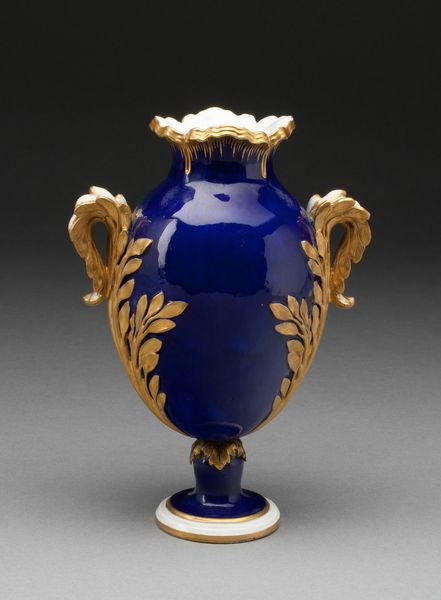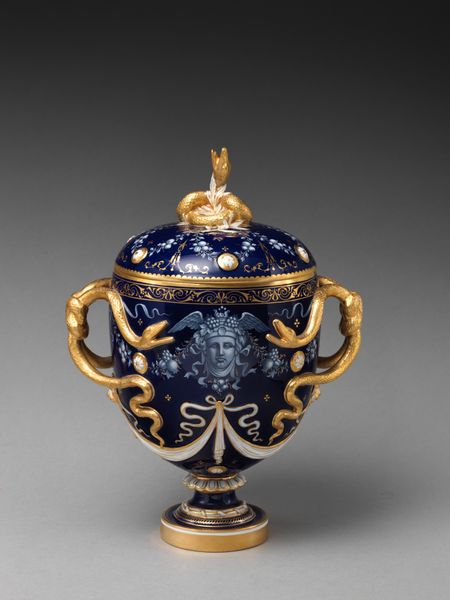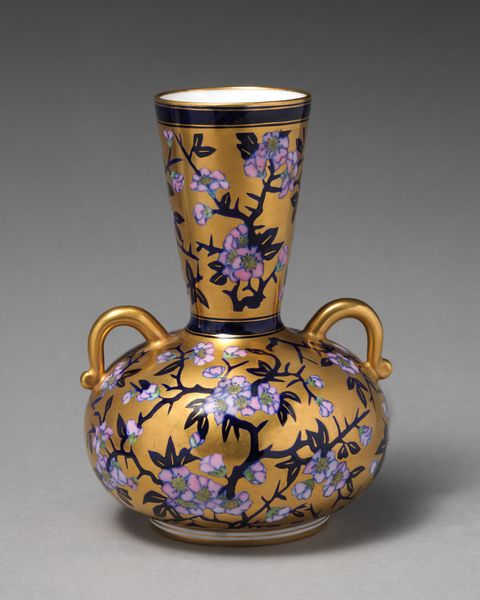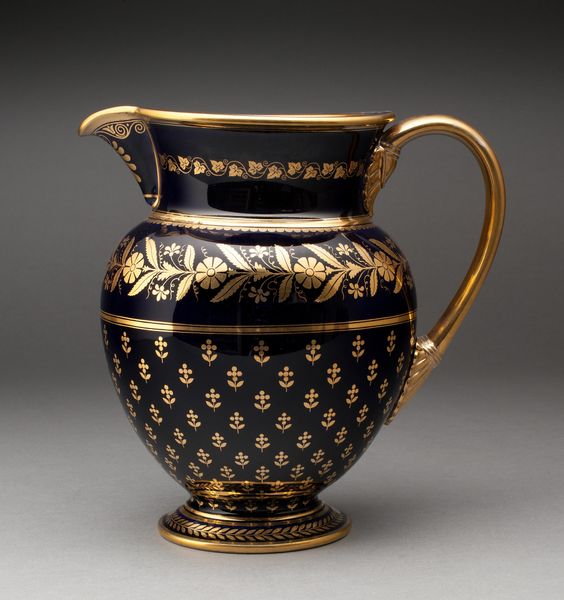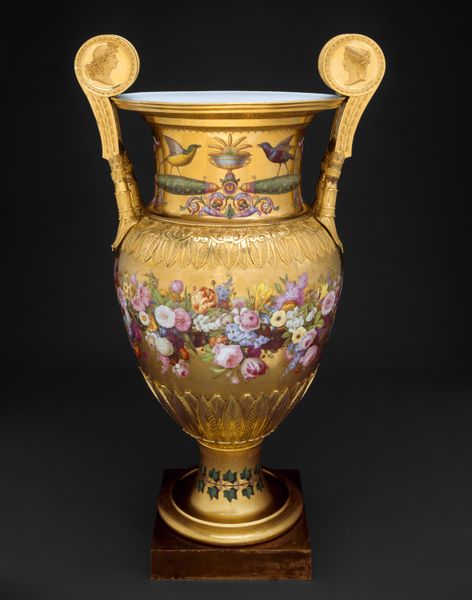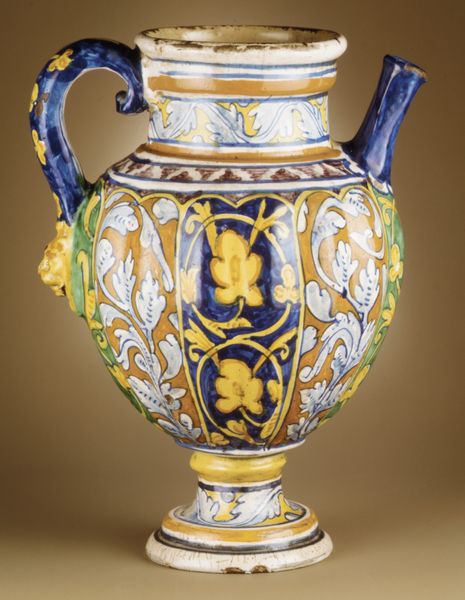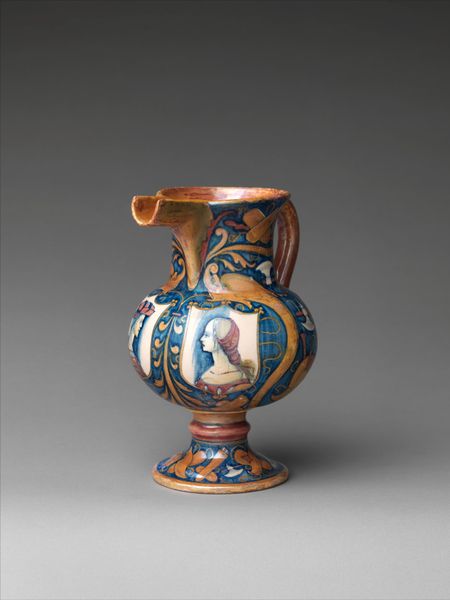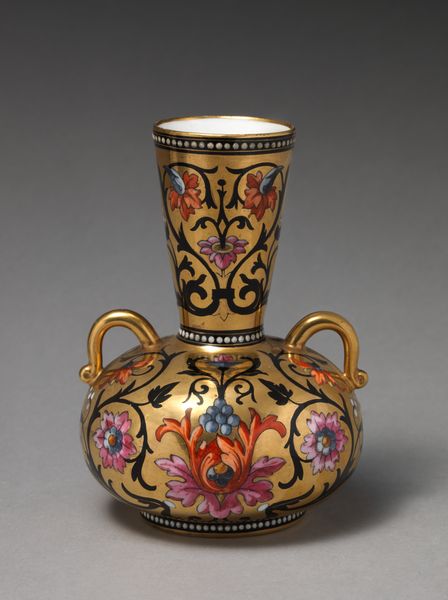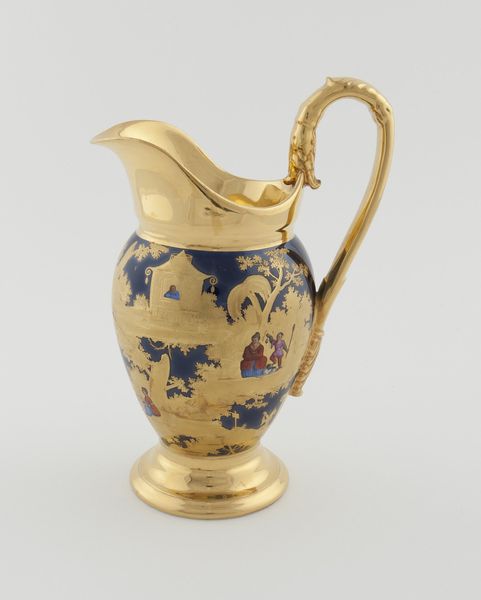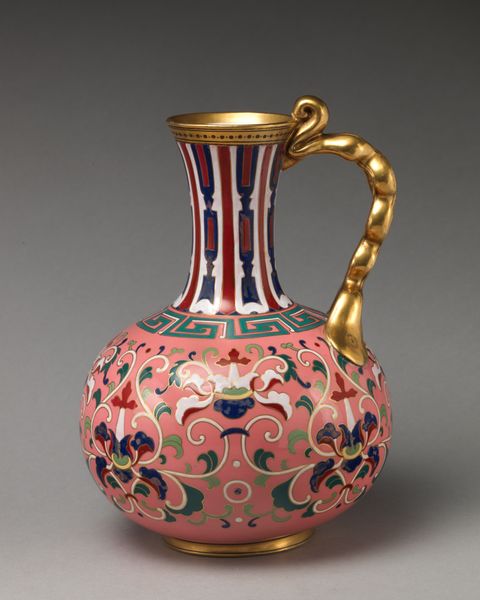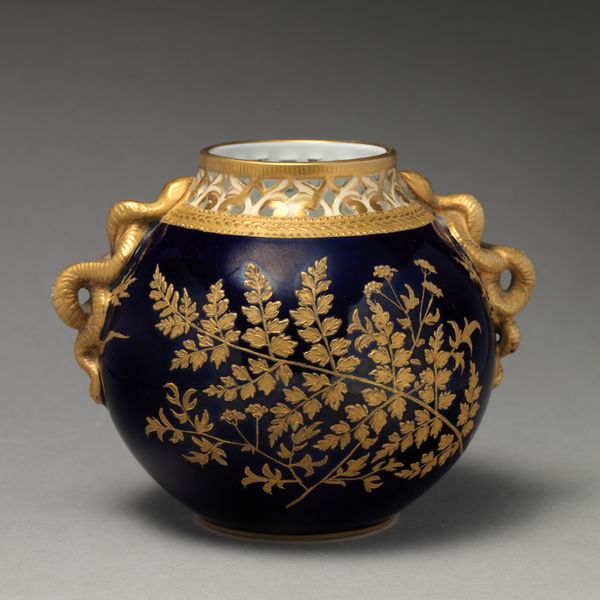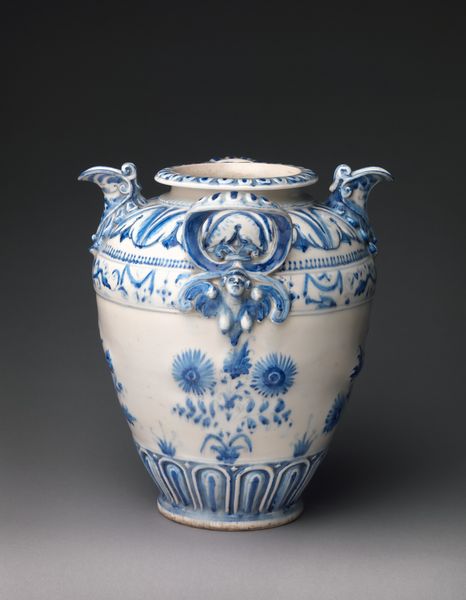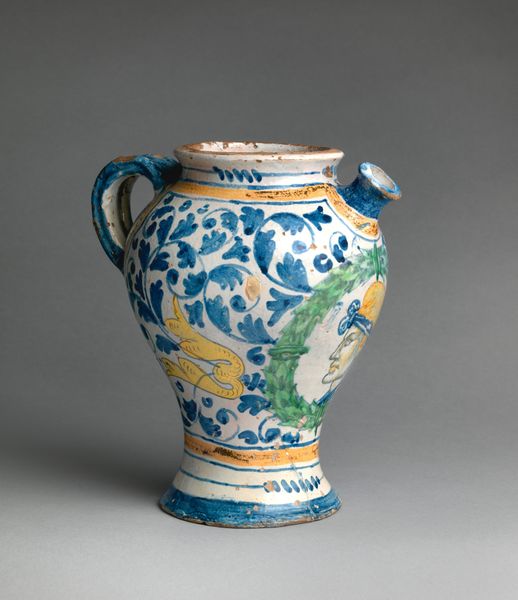
ceramic, porcelain, sculpture
#
ceramic
#
porcelain
#
figuration
#
sculpture
#
ceramic
#
decorative-art
Dimensions: confirmed: 5 7/8 × 4 7/16 × 3 1/2 in. (14.9 × 11.3 × 8.9 cm)
Copyright: Public Domain
Editor: This is a porcelain vase made between 1877 and 1882 by Crown Derby, currently held at the Metropolitan Museum of Art. It has such a vibrant yellow ground! What strikes me are the handles shaped like gilded heads. How do you interpret this work through a formalist lens? Curator: The interplay of color immediately arrests the eye. Note how the assertive yellow is counter-pointed by the cobalt blue detailing near the opening and the soft, white interior. It's a study in contrasts. Tell me, what do you make of the placement and form of the floral design? Editor: The flowers seem to cascade down the vase. And I find the ornate central medallions—sort of a blend of organic and geometric shapes—draw your focus despite the riot of the floral pattern all over. Curator: Precisely. The circular medallions break up what would otherwise be a strictly vertical rhythm. They act almost like visual anchors. Consider, also, how the curve of the vase itself dictates the arrangement of these elements. Are you considering the tactile implications? Editor: Yes, the smooth, reflective porcelain begging to be touched. It really is visually balanced. And the heads which look like they should be heavy provide grip but don't dominate the surface area. Curator: The tension between functionality and purely aesthetic elements is critical here. One could analyze each line, each curve, in terms of its contribution to this dynamic interplay. A vase that asks questions. Editor: It seems like a balance between classical form and something almost whimsical. Thinking of each of its structural aspects separately really unlocks this playful object. Curator: Indeed! Seeing is in understanding the parts that create a structured and meaningful whole.
Comments
No comments
Be the first to comment and join the conversation on the ultimate creative platform.
